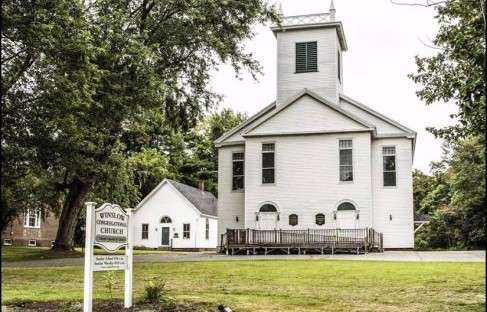Waterville construction update: Webb Rd. bridge now open Ticonic Bridge update
/0 Comments/in News, Waterville, Winslow/by Website Editor Webb Road: Construction on the Webb Road Bridge, in Waterville, is complete and open to traffic. The Webb Road intersects with the West River Road, and travels west towards Pond Road, in Oakland.
Webb Road: Construction on the Webb Road Bridge, in Waterville, is complete and open to traffic. The Webb Road intersects with the West River Road, and travels west towards Pond Road, in Oakland.
Ticonic Bridge, Waterville/Winslow: Starting on Wednesday, October 9, 2024, the project will be closing the Ticonic Bridge to all traffic between 2 a.m. and 6 a.m. for construction activities requiring access to the entire bridge.
Drivers are encouraged to drive cautiously, observe signage in the work zone, and reduce speed inside the work zone. Westbound travelers should continue to utilize the posted westbound detour.
Cianbro Corp. reminds the traveling public all sidewalks on the Ticonic Bridge are closed for the public’s safety. Pedestrians should continue to use the pedestrian detour across the Two Cent Bridge. Pedestrians should not walk around barricades, down the active lanes, in lane closures, or inside the work zone.
Also, it is unlawful and unsafe to traverse the river via the rail bridge. Pedestrians have been observed doing so and are reminded of the dangers of such activity. Pedestrians must utilize the Two Cent Bridge for foot traffic.
EVENTS: Veterans urged to take part in Veterans Day parade
/0 Comments/in Events, Waterville, Winslow/by Website Editor All veterans and community members are invited to participate in the Waterville Veterans Day parade on Monday, November 11, 2024. Lineup begins at 10 a.m., at The Elm, 21 College Ave. Waterville. A ceremony will be held at Castonguay Square, on Main St., at 11 a.m. It will be followed by lunch at MacCrillis-Rousseau Veterans of Foreign Wars Post #8835, on Veterans Drive, in Winslow.
All veterans and community members are invited to participate in the Waterville Veterans Day parade on Monday, November 11, 2024. Lineup begins at 10 a.m., at The Elm, 21 College Ave. Waterville. A ceremony will be held at Castonguay Square, on Main St., at 11 a.m. It will be followed by lunch at MacCrillis-Rousseau Veterans of Foreign Wars Post #8835, on Veterans Drive, in Winslow.
Scouts drive provides scouting uniforms for 23 scouts; also helps food bank
/0 Comments/in Clinton, Community, Winslow/by Chuck Mahaleris
From left to right, Christopher Bernier, of Waterville, the Goodwill mascot, and Millard Davis, of Clinton, at the annual Scouting uniform drive at Goodwill, in Waterville. Photo by Chuck Mahaleris
by Chuck Mahaleris

From left, Millard Davis, of Clinton, Christopher Bernier, of Winslow, and new Cub Scout Kenneth Murray Bryar, of Fairfield, who recently joined Winslow Pack #445. Photo by Chuck Mahaleris
Kennebec Valley District Scouting volunteers, under the leadership of Christopher Bernier, of Winslow, held two uniform drives this month providing Scout uniforms to 23 children. The first uniform drive took place at the Waterville Goodwill of Northern New England location, on Wednesday afternoon, on September 8. The second drive took place on September 19 at the Winslow Parks and Recreation Building, at 114 Benton Ave.
Those scouts, who just joined Scouting, could receive an experienced uniform including the patches they would need for their program. Returning Scouts who had outgrown their uniform, could get one new to them by returning their old one for someone else. Christopher Bernier, who is Scoutmaster of the troop, in Winslow, also encouraged scouts to bring in a food item for the needy or something for an animal at the Humane Society Waterville Area.
“Scouting gives kids an opportunity to help other people – or animals – at all times,” Bernier said. Every youth who brought a food item for the Pleasant Street United Methodist Food Bank or for the animal shelter received a “Scouting for Food” patch to display on their new to them uniform. If you need a uniform, contact Chris at circleofone555@hotmail.com.
Window Dressers create affordable window inserts
/0 Comments/in Central ME, China, Community, Vassalboro, Waterville, Windsor, Winslow/by Roberta Barnesby Roberta Barnes
Our nights becoming chilly is a reminder to begin preparing for winter.
One of the first places to focus on is your windows.
While replacement energy efficient windows might not fit into your budget, insulating window inserts are affordable and assembling them with others can be enjoyable.
Last November I was one of the people who, after having windows measured by volunteers from WindowDressers, joined others like me, and volunteers, from China, Vassalboro, Windsor and Albion at the Vassalboro Mill to assemble insulating window inserts.
Together we securely assembled wooden frames, covered each side of the frame with strong clear plastic, and added foam edges.
The strong plastic securely sealed on all sides of the frame forms the pocket of insulating air that can help to keep your home warm.
While completing each insulating window insert requires the correct equipment, materials, instruction, and time, the atmosphere was so enjoyable that people volunteered for extra shifts.
This year the location in Vassalboro has changed and there is also a location in Waterville which can be seen on the WindowDressers website.
Today you can either request window inserts by filling out the form online on the website https://windowdressers.org/ or sign up to volunteer.
In Maine you can also call (207) 596-3073. The deadline for signing up for inserts is September 15, 2024.
The cost for these insulting window inserts is kept affordable by the donations and volunteers helping to assemble the inserts.
You can estimate the cost of the inserts on the windowdressers.org website. There is also a low or no-pay Special Rate Program where you pay what you can afford.
You can discuss paying for your inserts with the person or people from WindowDressers when they come out to measure the windows.
There may be a limit of 10 inserts for this Special Rate Program.
The deadline for signing up to receive the window inserts for this winter 2024/2025 is September 15, 2024.
It is best if you go online today at https://windowdressers.org/, or call (207) 596-3073. Doing this can help you keep the chilly air outside your windows and enjoy being one of the people assembling the inserts in a friendly upbeat atmosphere.
EVENTS: Spectacular laser show & concert to benefit Winslow Community Cupboard Food Pantry
/0 Comments/in Community, Events, Winslow/by Website Editor
photo from: foodpantries.org
The Winslow Community Cupboard food pantry – which serves thousands of food-insecure children, seniors, and other adults from Winslow, Waterville, Skowhegan, Fairfield, and 20 other surrounding towns – will benefit from a spectacular Drive-in Laser Show & Concert coming to the Clinton Fairgrounds, 1450 Bangor Rd., Clinton, Friday and Saturday, August 23 and 24, with gates opening at 5 p.m. Cost is $39 per vehicle. To assure admission, ordering tickets in advance is strongly suggested.
Order Tickets at: https://www.freshtix.com/events/clintonlasers2, or call (608) 701-6114.
This summer’s event will be a double-feature. The pop laser show, which features top 40 hits from the ’70s through today, will start at 7:30 p.m., on Friday and Saturday. Following a short intermission, the classic rock show will start at 9 p.m. The classic rock show will feature some of the biggest rock hits of the ’70s and ’80s.
Vendors and food will be on the fairgrounds, and there will be an exclusive infield seating area. (Please bring your own chairs and blankets.)
Can’t attend? Those who may not be able to attend a Laser Show & Concert, but who would still like to donate to Winslow Community Cupboard food pantry, are invited to do so by sending a check payable to “Winslow Community Cupboard”, to 12 Lithgow St., Winslow, ME 04901, or by visiting WCCPantry.com and clicking on the yellow “Donate” button.
For more information, please contact Winslow Community Cupboard at WinslowCupboard@Gmail.com.
PHOTOS: Winslow has strong showing at USATF track and field trials
/0 Comments/in Augusta, School News, Sports, Winslow/by Mark Huard
Winslow’s Natalie Cassiana, competing at the USATF Youth Track and Field championships, held at Cony High School, in Augusta, on August 10.. (photo by Mark Huard, Central Maine Photography)
by Mark Huard
The USATF Youth Track and Field Championships took place at Cony High School on Saturday August 10. Over 1,000 youth track & competitors from all around the state of Maine were in attendance for a great day!
EVENTS: 53rd annual blueberry festival set for Aug. 10
/0 Comments/in Events, Winslow/by Website Editor One of Maine’s all-time most popular, beloved, and downright yummy summer events – Winslow’s annual Blueberry Festival – is coming this year on Saturday, August 10, from 7 a.m. to 1 p.m., to Winslow Congregational Church, 12 Lithgow Street, Winslow. Admission to the festival grounds is FREE.
One of Maine’s all-time most popular, beloved, and downright yummy summer events – Winslow’s annual Blueberry Festival – is coming this year on Saturday, August 10, from 7 a.m. to 1 p.m., to Winslow Congregational Church, 12 Lithgow Street, Winslow. Admission to the festival grounds is FREE.
Nearly 700 mouth-watering blueberry pies and “all things blueberry” baked goods will be available for sale. Blueberry pies ($15 each; 2 for $25) may be picked up at the church anytime from 4 to 7 p.m., the previous evening (Friday, August 9) or the day of the festival (Saturday, August 10) from 7 a.m. to 1 p.m., or until they are sold out.
Blueberry Pancake Breakfast
Kicking off the 53rd Annual Blueberry Festival on Saturday will be a delicious Blueberry Pancake Breakfast, from 7 to 10 a.m. Cost of the breakfast will be $7 per person and $5 for children ages 12 and under, payable at the door.
Other Great “Festival Festivities”
In addition to the “all things blueberry” pies and other delicious baked goods, festival patrons will enjoy live music outdoors, an inside-the-church organ concert by Josh Bickford, a big Gift Cards Raffle, a Lobster Raffle, and more.
More about the 53rd Annual Blueberry Festival
A beloved community favorite since 1972, the Blueberry Festival raises funds to empower the local humanitarian/Christian-service work of Winslow Congregational Church. Celebrating its 196th birthday this year, the historic church is housed in a building dating from 1796, which has been home to a worshipping congregation since 1828.
Everyone seeking a wonderful opportunity to gather and enjoy a treasure trove of “all things blueberry” is cordially invited to attend this year’s Blueberry Festival!
For more information about the 53rd annual Blueberry Festival, please call (207) 872-2544 or email news.winslowucc@gmail.com.
TEAM PHOTO: Winslow Minors Orange
/0 Comments/in Photo, School News, Sports, Winslow/by Website Editor
The Winslow Minors Orange baseball team, from left to right, Jackson Hernandez, Cedric Carey, Cooper Lindie, Logan Elwell, River Vigue, Maddox Maheu, Elliot Giroux, Xavier Roderick, Charles Holmes, Anthony Sproul, Landen Williams, Griffin Smith, Peter Small. Back, Coaches left to right Ben Carey, Justin Smith, and Tony Giroux. Not pictured, Erik Maheu. (photo by Missy Brown, Central Maine Photography)
TEAM PHOTO: Winslow Minors Black
/0 Comments/in Photo, School News, Sports, Winslow/by Website Editor
Winslow Minors Baseball Black Team: First row, left to right, Lynkin Willette, Sawyer Byrne, Colby Turmelle, Jude Poulin, Fenn Ouellette, and Jaxson Whitman. Second row, Andrew Harrington, Nathan Lecliar, Weston Young, Bronek Siviski, Bradley Schmidt, Nate Merrill, and Xavier Snell. Back, coaches Bruce Harrington, Taylor Byrne, Ryan Siviski, and David Snell. (photo by Mark Huard)
Interesting links
Here are some interesting links for you! Enjoy your stay :)Site Map
- Issue for July 10, 2025
- Issue for July 3, 2025
- Issue for June 26, 2025
- Issue for June 19, 2025
- Issue for June 12, 2025
- Issue for June 5, 2025
- Issue for May 29, 2025
- Issue for May 22, 2025
- Issue for May 15, 2025
- Issue for May 8, 2025
- Issue for May 1, 2025
- Issue for April 24, 2025
- Issue for April 17, 2025
- Issue for April 10, 2025
- Issue for April 3, 2025
- Issue for March 27, 2025
- Issue for March 20, 2025
- Issue for March 13, 2025
- Issue for March 6, 2025
- Issue for February 27, 2025
- Issue for February 20, 2025
- Issue for February 13, 2025
- Issue for February 6, 2025
- Issue for January 30, 2025
- Issue for January 23, 2025
- Issue for January 16, 2025
- Issue for January 9, 2025
- Issue for January 2, 2025
- Sections
- Our Town’s Services
- Classifieds
- About Us
- Original Columnists
- Community Commentary
- The Best View
- Eric’s Tech Talk
- The Frugal Mainer
- Garden Works
- Give Us Your Best Shot!
- Growing Your Business
- INside the OUTside
- I’m Just Curious
- Maine Memories
- Mary Grow’s community reporting
- Messing About in the Maine Woods
- The Money Minute
- Pages in Time
- Review Potpourri
- Scores & Outdoors
- Small Space Gardening
- Student Writers’ Program
- Solon & Beyond
- Tim’s Tunes
- Veterans Corner
- Donate






